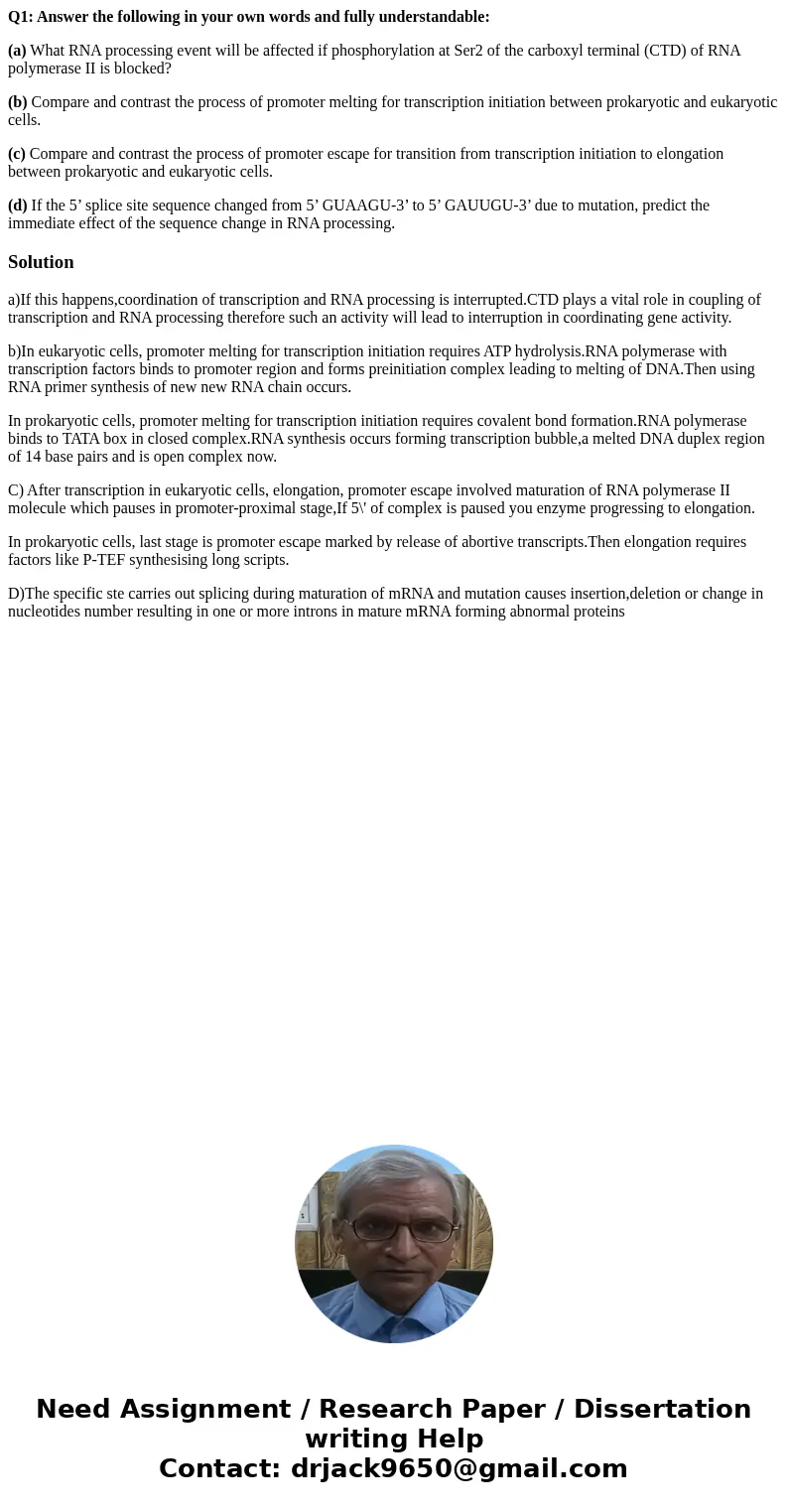Q1 Answer the following in your own words and fully understa
Q1: Answer the following in your own words and fully understandable:
(a) What RNA processing event will be affected if phosphorylation at Ser2 of the carboxyl terminal (CTD) of RNA polymerase II is blocked?
(b) Compare and contrast the process of promoter melting for transcription initiation between prokaryotic and eukaryotic cells.
(c) Compare and contrast the process of promoter escape for transition from transcription initiation to elongation between prokaryotic and eukaryotic cells.
(d) If the 5’ splice site sequence changed from 5’ GUAAGU-3’ to 5’ GAUUGU-3’ due to mutation, predict the immediate effect of the sequence change in RNA processing.
Solution
a)If this happens,coordination of transcription and RNA processing is interrupted.CTD plays a vital role in coupling of transcription and RNA processing therefore such an activity will lead to interruption in coordinating gene activity.
b)In eukaryotic cells, promoter melting for transcription initiation requires ATP hydrolysis.RNA polymerase with transcription factors binds to promoter region and forms preinitiation complex leading to melting of DNA.Then using RNA primer synthesis of new new RNA chain occurs.
In prokaryotic cells, promoter melting for transcription initiation requires covalent bond formation.RNA polymerase binds to TATA box in closed complex.RNA synthesis occurs forming transcription bubble,a melted DNA duplex region of 14 base pairs and is open complex now.
C) After transcription in eukaryotic cells, elongation, promoter escape involved maturation of RNA polymerase II molecule which pauses in promoter-proximal stage,If 5\' of complex is paused you enzyme progressing to elongation.
In prokaryotic cells, last stage is promoter escape marked by release of abortive transcripts.Then elongation requires factors like P-TEF synthesising long scripts.
D)The specific ste carries out splicing during maturation of mRNA and mutation causes insertion,deletion or change in nucleotides number resulting in one or more introns in mature mRNA forming abnormal proteins

 Homework Sourse
Homework Sourse